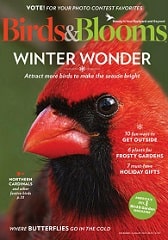Discover - Birds Will Help Raise The Young of Other Bird Pairs
Ever wonder if birds help feed and raise the young of others? Dr. Scott Shalaway discusses this topic of "Helper Birds" below.
Do Birds Feed Others Babies
When a friend noticed two helper birds that were male bluebirds, he watched as they appeared to be helping a female with a newly hatched brood of nestlings, she wanted to know if one of the males was an interloper.
This is precisely the kind of observation that makes bird watching so appealing. You never know when you'll stumble onto something exciting and unusual.
Bluebirds, like 90 percent of the bird world, practice monogamy -- most of the time. One male pairs with one female, and together they raise a family.
But sometimes a third adult shows up and helps the pair raise their brood. Often it is a relative.
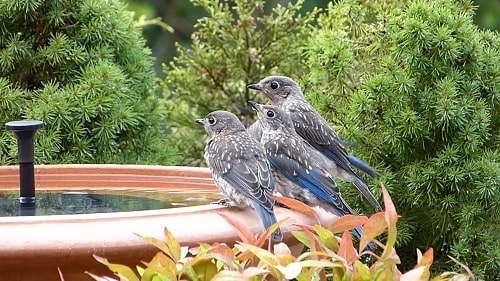
Family of Fledgling Bluebirds Visiting Birdbath
The most likely reasons a lone bluebird becomes a "helper bird" are that it either has lost its mate or failed to acquire one during the mating season.
Both the mated pair and the helper benefit when helping occurs.
Every time the helper brings food to the nest, one of the parents is freed to take care of its own needs for a few minutes.
Helpers also protect the nest by watching for and harassing would-be predators.
The helper's gain is less immediate but equally valuable. He or she (helpers can be male or female) learns how to be a parent.
Though nesting behavior is instinctive, experienced parents usually are more successful.
What better way to learn the ropes than by helping out an experienced pair? Think of it as on-the-job-training for birds.
And if the helper bird is related to the parents, it actually helps pass on a portion of its genes to the next generation, and that is the ultimate purpose of sexual reproduction.
So we might also think of "helping" as a lazy way to transmit one's genetic heritage.
To document helping at the nest requires extensive field studies of banded birds.
Few species have been that well studied, but one that has been is the Florida scrub jay.
Found only in scarce oak scrub habitat, many pairs of Florida scrub jays "employ" one to six helpers.
Usually the helpers are offspring from previous years, and they do their job very well.
Nests with helpers fledge 50 percent more young than nests without helpers (about half the jays don't use helpers).
Helping behavior in scrub jays seems related to a scarcity of suitable nesting habitat.
Young jays must wait for older birds to die to acquire a nesting territory, so they bide their time by helping to raise several generations of young birds.
By the time a territory becomes available, they are skilled parents.
Though monogamy is common to both birds and people, other avian mating systems also are strangely human-like.
Hummingbirds and woodcock, for example, are promiscuous. Males of both species perform aerial acrobatics to attract a succession of females.
Dominant males are so exhausted by their reproductive antics that females are left to build the nest and tend the young on their own.
Red-winged blackbirds and ring-necked pheasants, on the other hand, are polygamous, meaning that dominant males mate with two or more females.
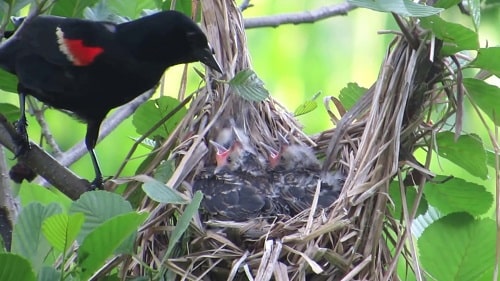
Red-winged Blackbird Feeding Young
Unlike promiscuous males, polygamous males establish a social bond with their harems.
They may drive away other males, protect the breeding area from predators and/or defend the harem's feeding area.
Monogamous, helpful, promiscuous -- birds may be more like people than most of us would care to believe.
© birdfeeding.org.The Birds-Eye reView, used with permission
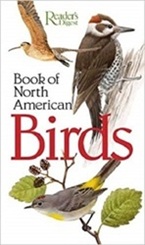
|
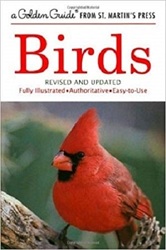
|
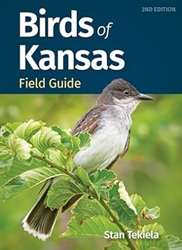
|

|
| Readers Digest Guide | Golden Guide | Your State Only | Nat-Geo Guide |


